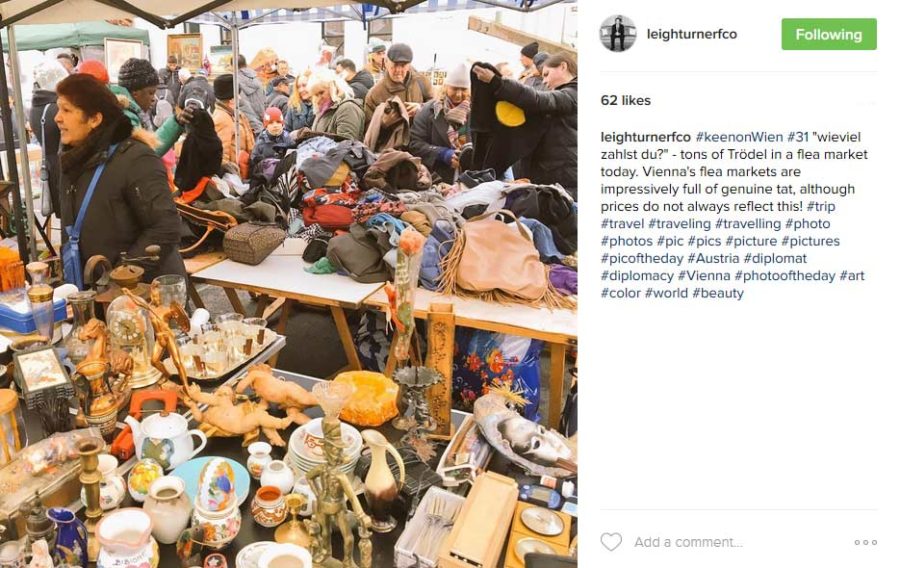The clock is slightly fake. Its large face, with a hint of what I believe may be 1930s or 1950s design, displays not only hour, minute and second hands, but also – mostly – the correct time.
Take it off the wall, however, and you will see that the original electric mechanism has been replaced by a quartz device. The second hand is newer than the other two.
Despite this inauthenticity, I treasure my wall-clock, which I bought, inoperative, at the Naschmarkt flea market in Vienna during my tour here from 1984 to 1987. I took it to a clock factory in Vienna who told me that the electrical mechanism could not be repaired but that they could put on a quartz one – and a second hand – for 50 schillings (around €3).
Since then the clock, complete with fragile glass case, has miraculously survived travels from Vienna to London to Moscow to London to Berlin to Sevenoaks to Kyiv to Istanbul and, now, back to Vienna.
Not all my Viennese possessions have survived. My framed black and white portrait of HM the Queen, rescued from the attic of the old British Embassy in the Reisnerstrasse in 1987, was smashed en route to Moscow in 1992. The front forks of my Steyr Waffenrad, bought in Vienna in 1985, were terminally bent in transit from Moscow to London in 1995.
People differ in their attachment to material objects. Some love to acquire new things; others hoard old stuff; others like to minimise all possessions. Personally, I find that having a few familiar objects around me gives me pleasure and comfort as I move from place to place.
So I have been pleased to rediscover, on my return to Vienna in 2016, several items which I acquired during my previous tour here.
Three liqueur glasses again came from the Vienna flea market. Too tiny for anything other than symbolic after-dinner digestifs, and suitable only for people who do not mind drinking from chipped non-standard vessels, they come out only occasionally.
A “Robox” blotter, inscribed with what looks like the trade mark “bene”, also from the Naschmarkt. This object, useful to me as I use daily one of my father’s “Pelikan” fountain pens, has sat on my desk for over 30 years. I treasure it for both function and design.
Wooden “in” and “out” trays, also from the attic of the old Embassy in the Reisnerstrasse, from which the British Embassy moved in 1989 into its present abode in the Jaurèsgasse. The trays have lost function as information has fled paper for computers, the first of which we acquired in the Reisnerstrasse in 1986.
I enjoy having the unemployed trays on my desk, their dovetail joints and brass screws evocative of a past era of craftsmanship. Turn one over and they are revealed to be the work of Cresswell Brothers Ltd, manufactured (like me) in 1958 with a code (FTR 12LM) and stamped with an “ER” (for “Elizabeth Regina”) under a crown. Traces remain of a green felt covering, (anyone know where I can get them recovered?) as well as old stickers, including “Britain in Vienna 1986” and Klagenfurt airport.
I’d welcome your thoughts on the relative merits of owning old things; acquiring new ones; and owning nothing. I’m also interested in the extent to which something I acquired in Vienna in the ‘80s can be described as “Viennese” or whether it is simply “from Vienna”; and what defines that.
In the coming weeks I shall be putting out on Twitter (@leighturnerFCO) and Instagram (leighturnerFCO) pictures of some of my 1980s Viennese bits and pieces (in German: Krimkram), with the hashtag #viennamemories. Do sign up!

